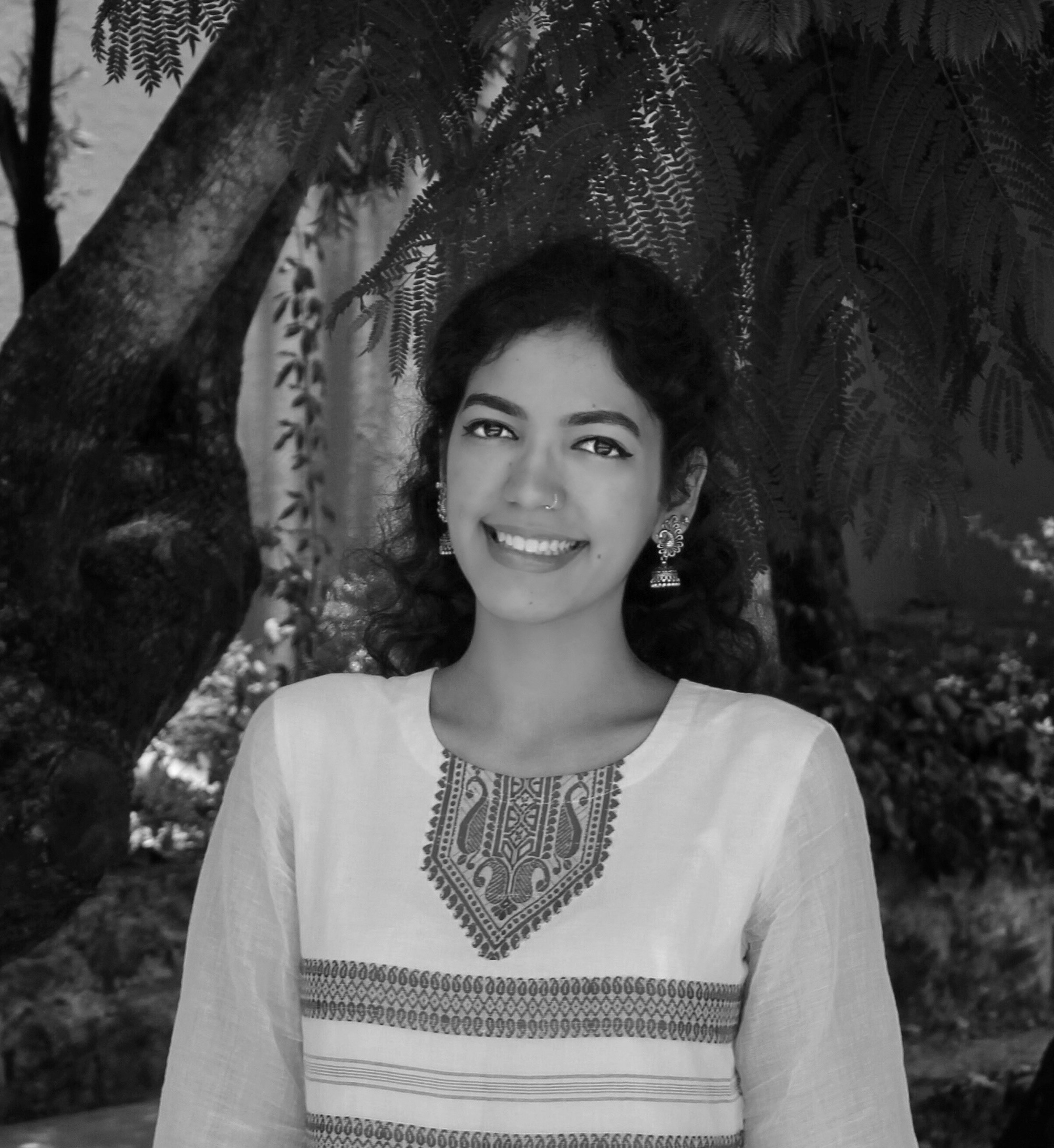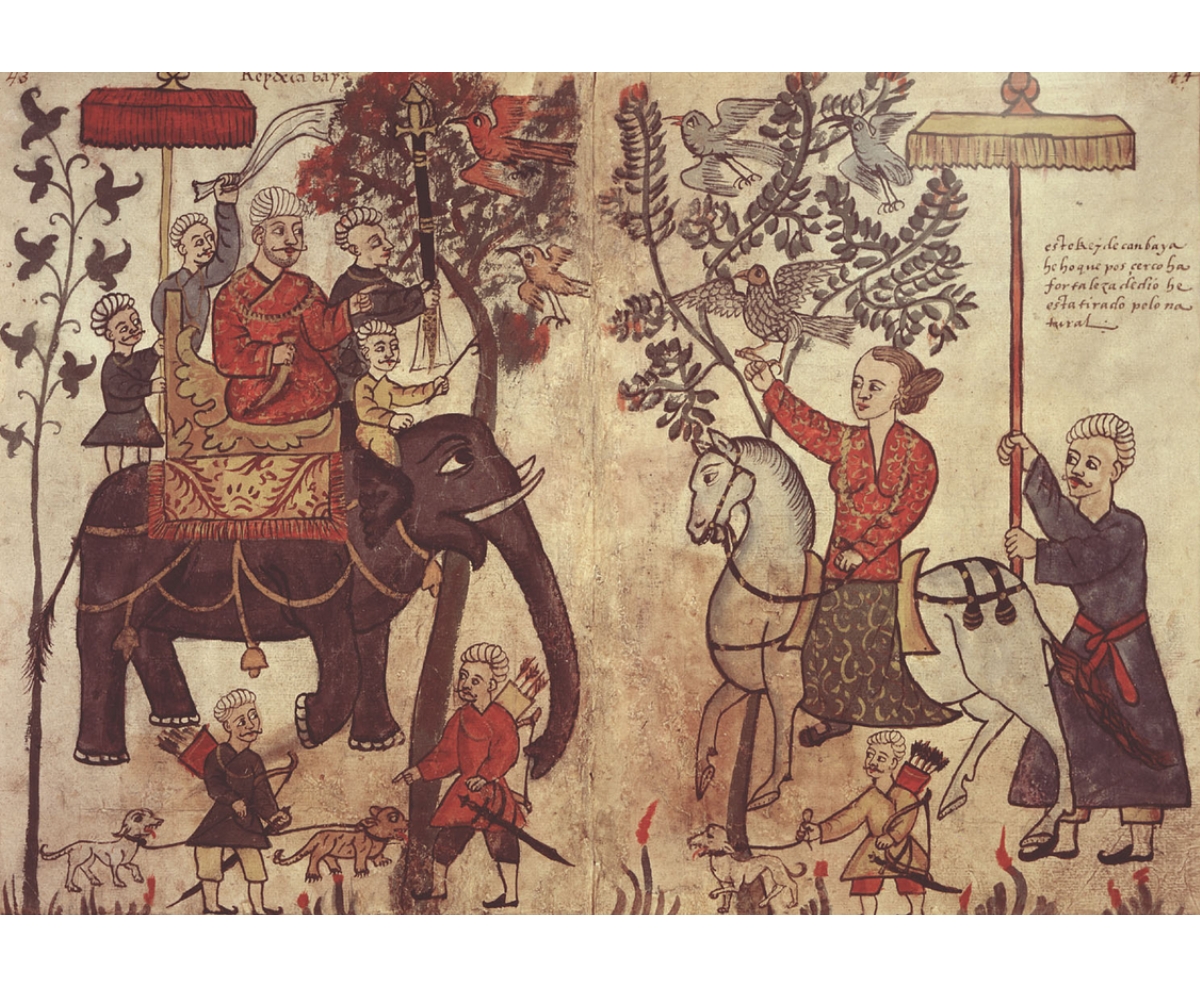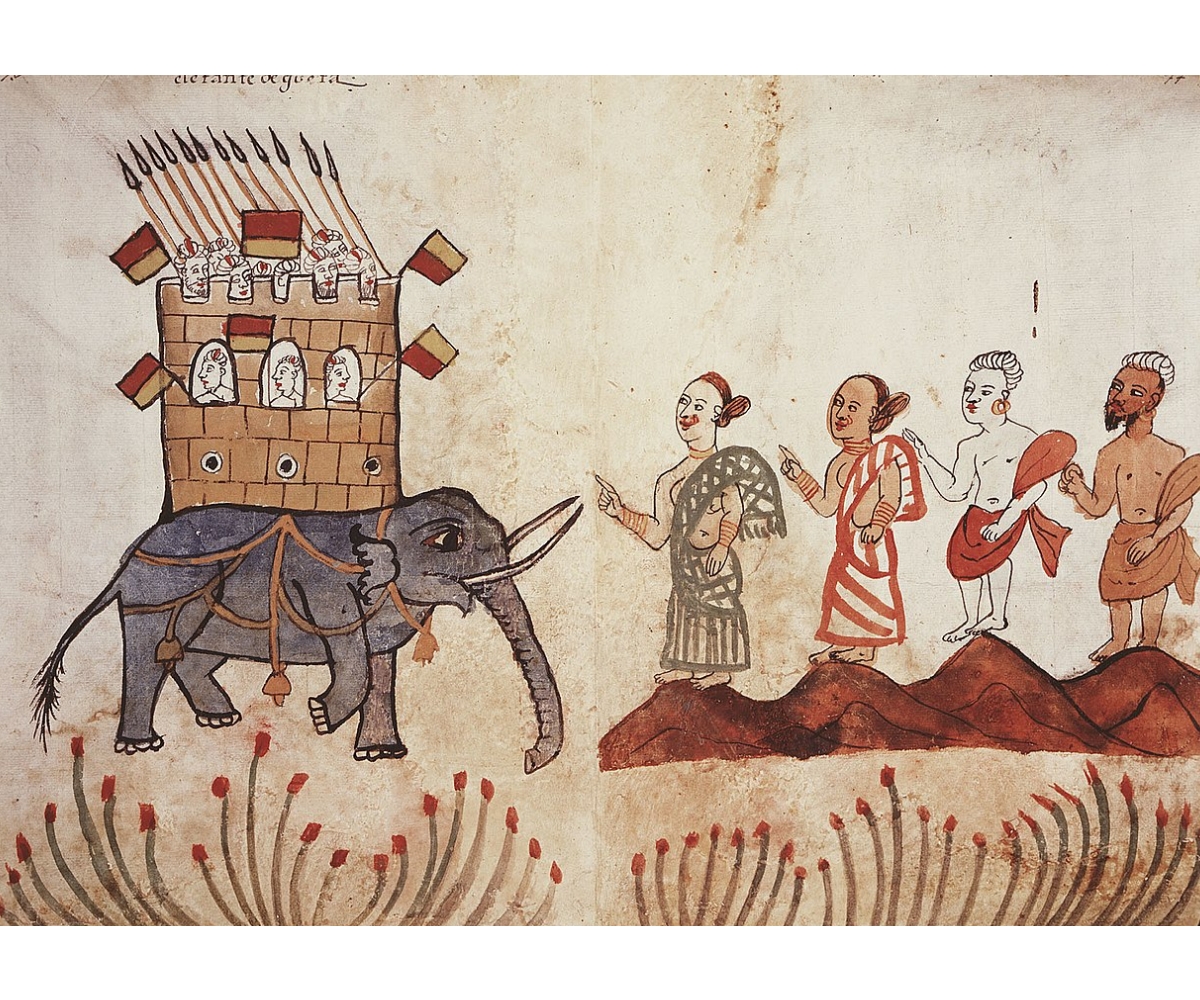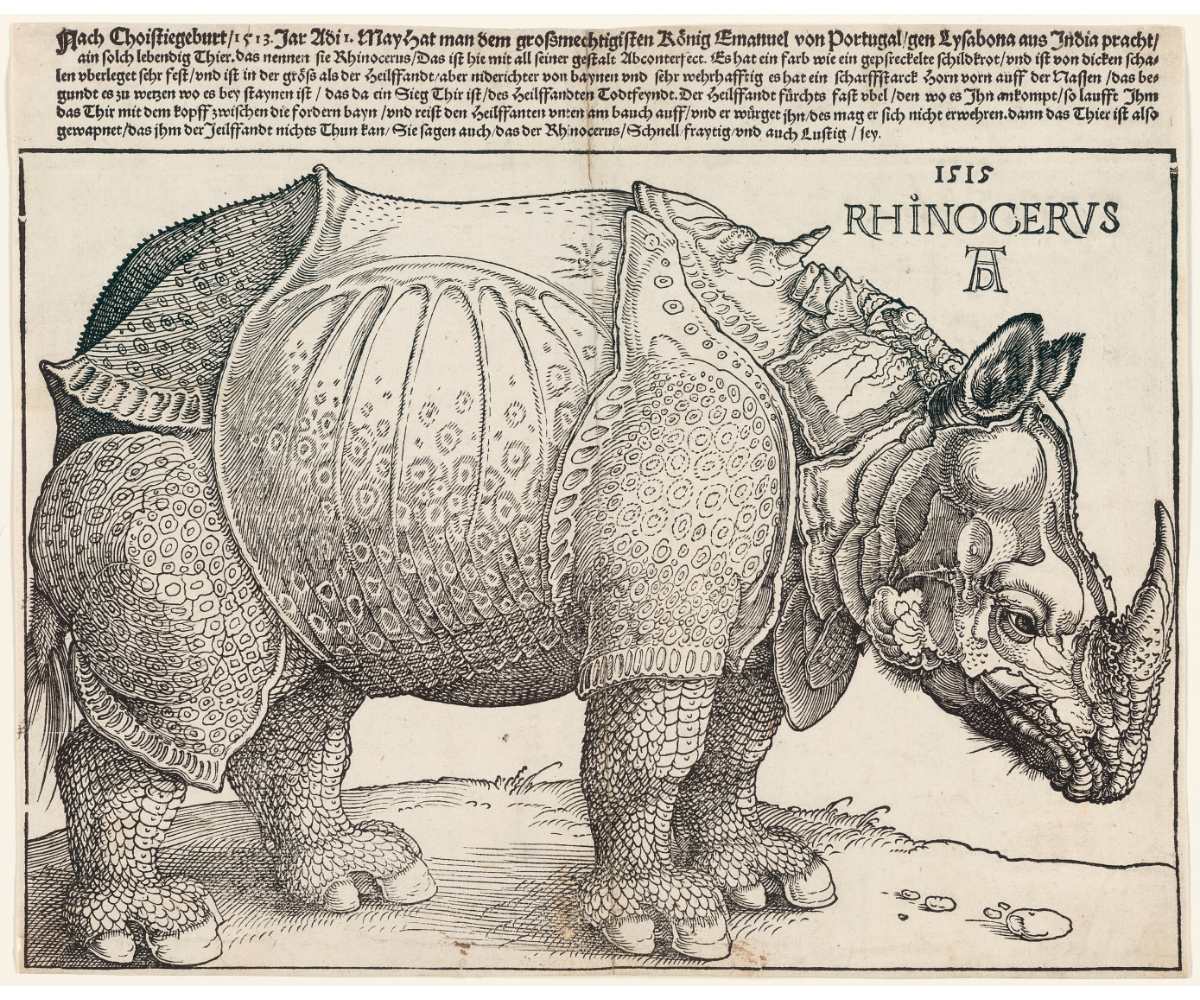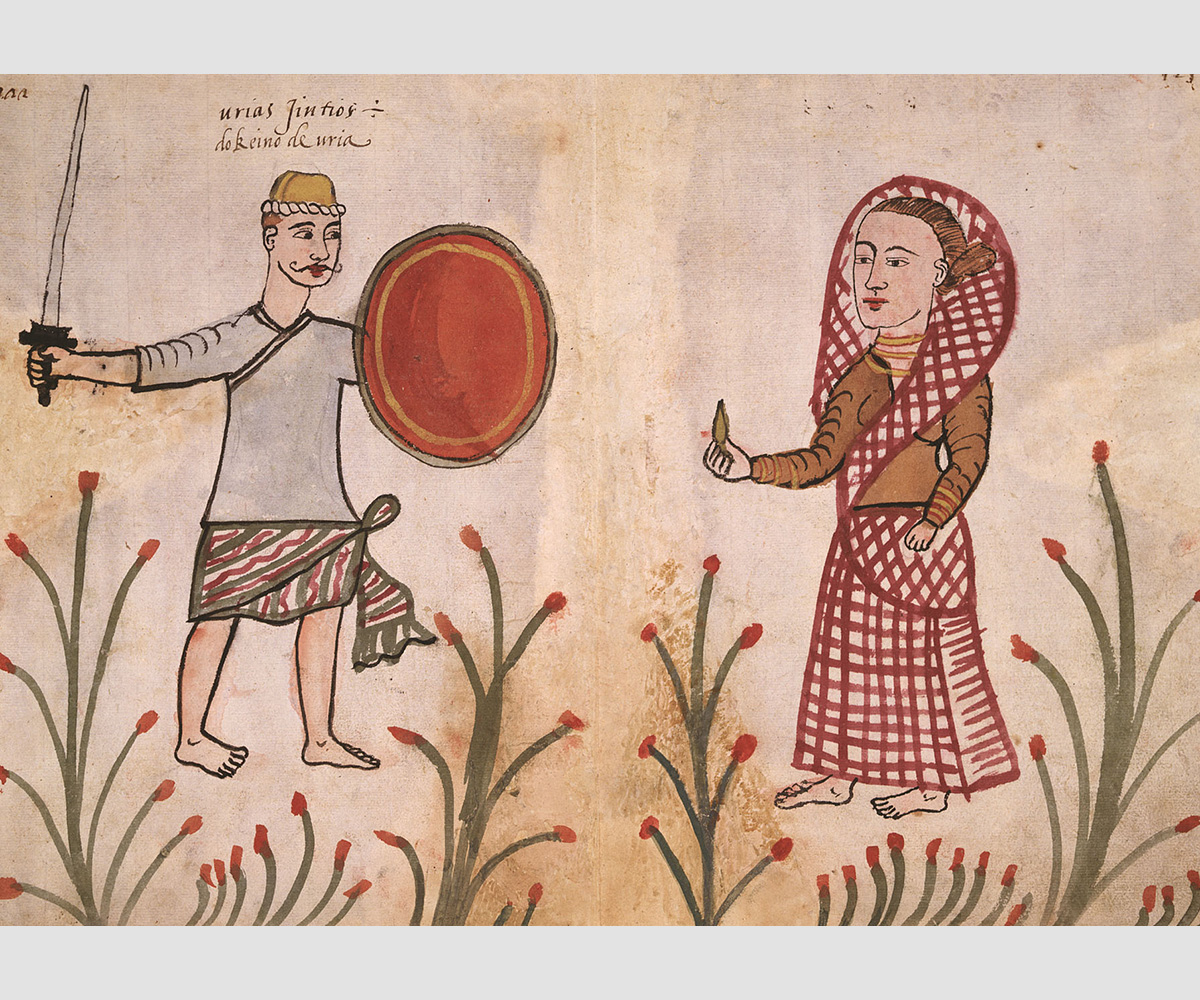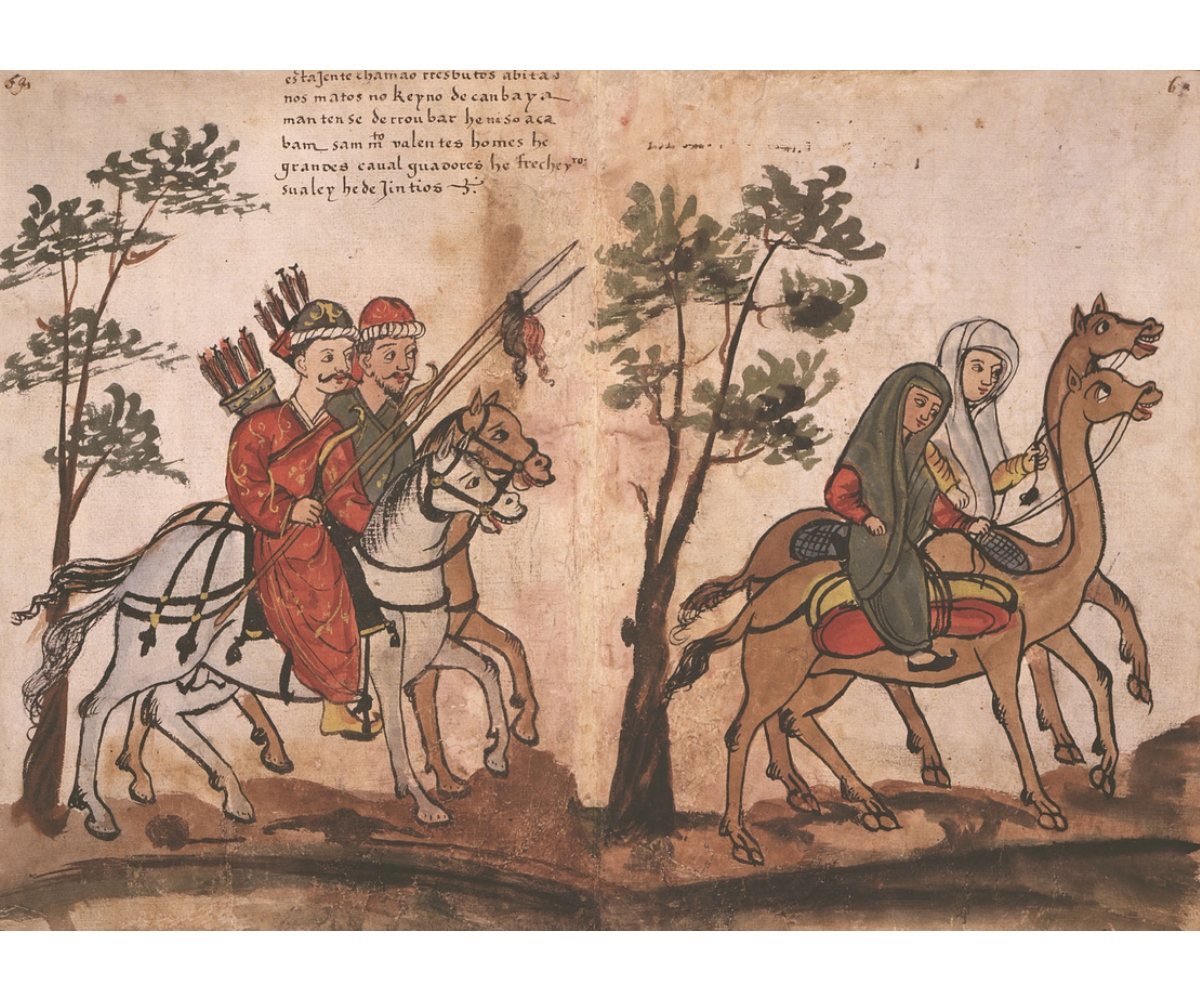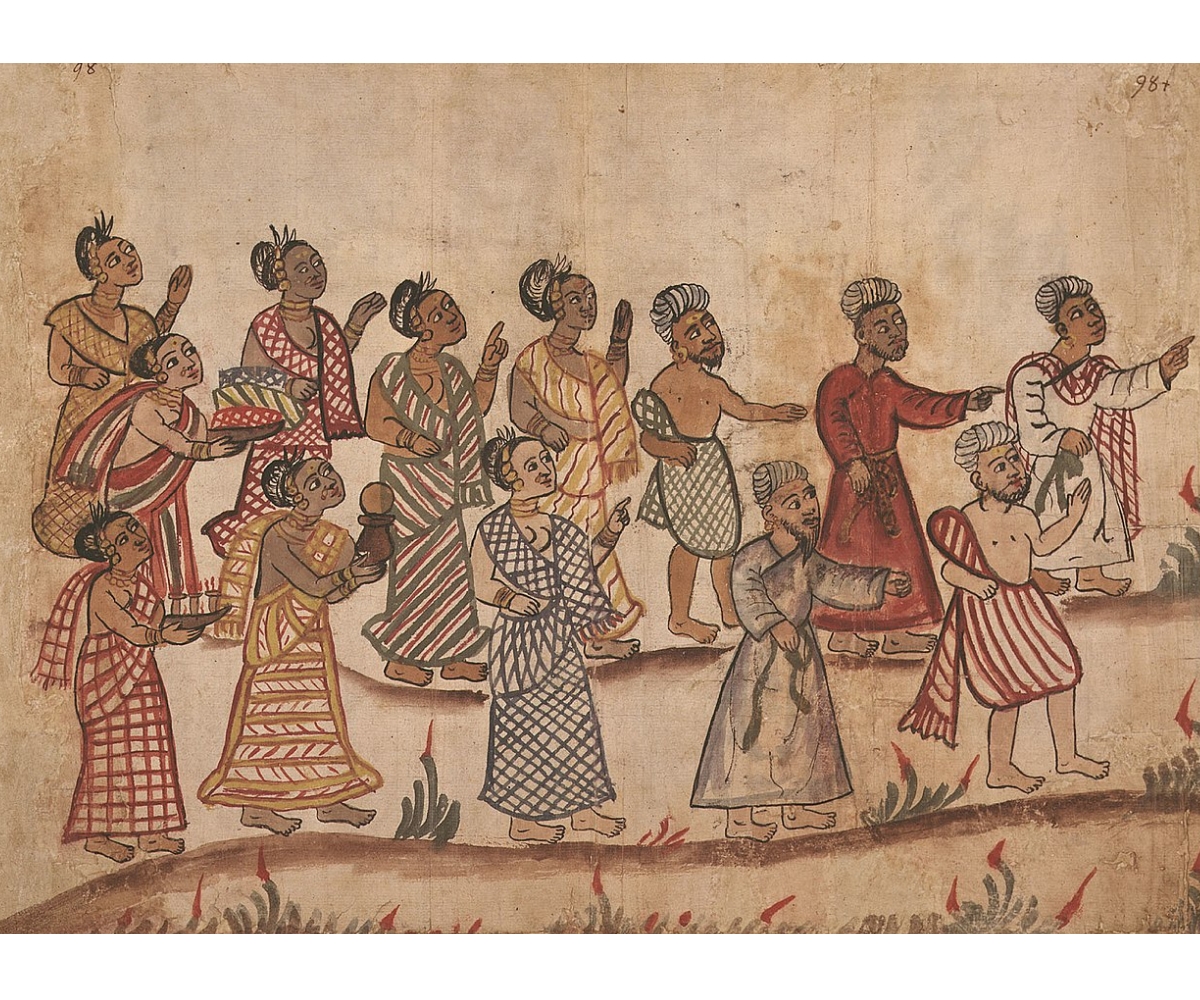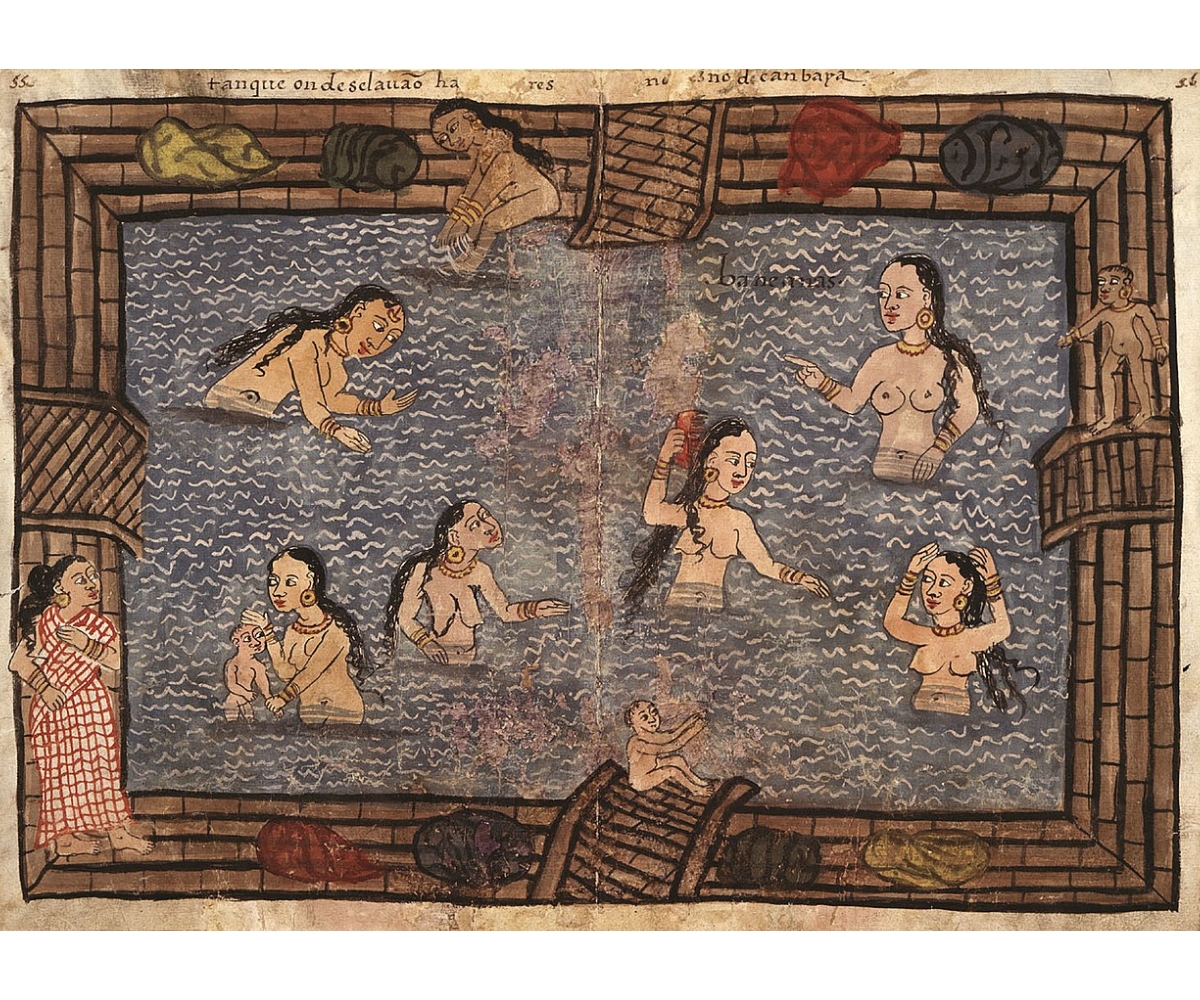PERSPECTIVES
Taken From Life: The Case of a 16th-century Indo-Portuguese Album
What does it mean to depict something from life? Are we more predisposed to accepting the truth of a painting when it claims to eye-witness verisimilitude? This often used tag of “taken from life” appears in an image from an Indo-Portuguese collection at the Biblioteca Casanatense in Rome. Entitled “Album of drawings, illustrating the uses and customs of the people of Asia and Africa with a brief description in Portuguese language,” the paintings in this 16th-century album show people in their local costumes, dining, bathing, washing clothes, and going about their daily lives.
Of its many watercolours, folio 43 presents the “King of Cambay” atop an elephant. Better known as the Sultan of Gujarat, he dons a white turban and a red and gold tunic or jama. A female falconer faces him, her dress mirroring the colours of his costume. The chromatic threads that connect the two protagonists continue, as a golden parasol shelters her while a red one hovers above him. But the potential for true connection lies in their mirrored fingers. The image shows us that pregnant pause when the King extends his left finger outwards in hopes of receiving the bird that perches upon the falconer’s finger. The Portuguese inscription on the right confirms that this is the King who besieged the fortress of Diu, whose portrait has been “taken from life.”
This emphasis on the eye-witness nature of the represented encounter raises questions about the identity of the artist: was it an itinerant Portuguese or someone from the Indian subcontinent? Why did they feel the need to highlight the realist nature of the portrait — that it presented the King the way he really looked? And what purpose might this kind of collection have served?
When Vasco da Gama came to India in 1498, his arrival was followed by a host of travellers eager to report back to the Kingdom of Portugal. These visitors would write travelogues and sketch illustrations detailing the costumes and rituals of native populations. Considering the Album’s use of Portuguese, would one not assume that the artist might also be from Europe? Interestingly enough, this is not the case. It turns out that the artist was of Indian origin, working in collaboration with foreign visitors. The result was a unique Indo-Portuguese artefact that would have circulated as an exotic encyclopedia back in Europe, much like the costume books that rose in popularity after Christopher Columbus’s 1492 arrival in the “New World,” i.e. the Americas.
While the Codex’s exact date remains unknown, it is speculated that it was made between 1538 and 1546. This means that the “King of Cambay” presented here is Mahmud Shah III, the Sultan of Gujarat. Rising to power after a chaotic period of succession disputes, Mahmud reigned for almost two decades, before his death in 1554. His depiction here makes one wonder about the conversation he had with the Portuguese emissaries visiting his court. It also raises the question: why would the King’s portrait be included in a codex that otherwise documented quotidian people from the subcontinent? After all, most of the other sketches represent daily activities — bathing in water tanks, blacksmithing, and selling grain. These acts are carried out by groups of people, labelled in Portuguese as “water sellers,” “farmers,” “Goan footsoldier,” “Bengalis.” Amongst these categories, the King of Cambay stands out through his explicit identification. Did his portrait, “taken from life,” desire to legitimise the King’s rule locally and globally? This could very well be the case, especially after the Portuguese had brutally killed his predecessor, Sultan Bahadur Shah in 1537, dumping his body in the very sea that had brought them to the subcontinent.
One of the ways in which the riches of the land are emphasised is by its flora and fauna. The King’s elephant gazes up at the flying birds, with a playful expression that resembles a smile. The sixteenth century was a time when European fascination with “exotic” animals had increased to such an extent that emperors and popes wanted to house them in their bestiaries. Consider the case of the Indian rhinoceros sent by Manuel I, the King of Portugal, to Pope Leo X in 1515, which was later made famous by Albrecht Dürer’s widely circulating woodcut. Dürer had never seen a rhinoceros in real life. His drawing was merely a fantasy concocted upon the scant visual and textual remains of a travel record. Unlike Dürer’s rhinoceros, the artist of the Codex would have seen elephants, even if the ones he depicted might not have been “taken from life.” The Codex’s elephant, like those painted in Sultanate manuscripts, borrowed visual codes from Persian images. What we then see is an Indian artist representing a Persian-style elephant for a Portuguese traveller intent on showcasing this record as scientific documentary evidence.
Although paintings in the Casanatense Codex claim to be taken from life, the images are actually a mix of borrowed pictorial conventions alongside memories and retellings of foreign peoples and customs. As with any encounter between different cultures, there is a hint of reality and fantasy. Something new is interspersed with something old.
The Casanatense image of the Sultan suspends us in one such moment of flux — a breath held, a finger extended, and a bird that potentially flies towards it. We see these impulses in the Album, whose creation and provenance attest to how objects tell stories and connect geographies — India, Portugal, Italy — in their rich peripatetic afterlives.
Bibliography
J.P. Losty, “Codex Casanatense 1889: an Indo-Portuguese 16th century album in a Roman library,” 2014.
J.P. Losty, “Identifying the Artist of Codex Casanatense 1889,” Anais de História de Além-Mar, XII (2012), 13-40.
Mildred Archer, Company Paintings: Indian paintings of the British Period (Victoria and Albert Museum, London, 1992).
James McNabb Campbell, History of Gujarat, Gazetteer of the Bombay Presidency, Volume I, Part I.



